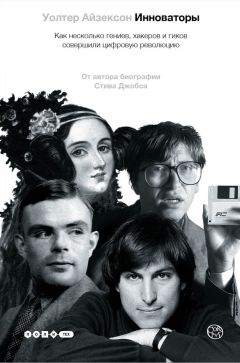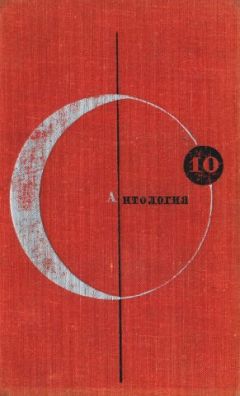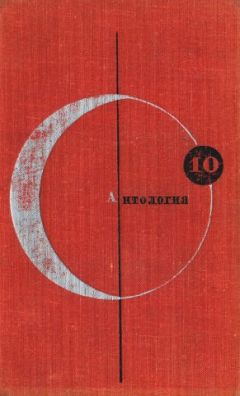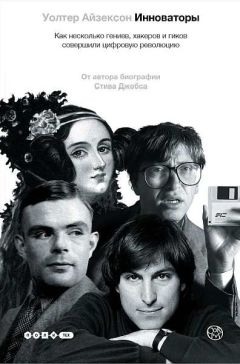Глава 4
1 Jon Gertner, The Idea Factory: Bell Labs and the Great Age of American Innovation (2012) (страницы указаны по изданию для Kindle). В дополнение к приведенным ниже цитатам при написании этого раздела использовались следующие источники: Joel Shurkin, Broken Genius: The Rise and Fall of William Shockley (2006), (страницы указаны по изданию для Kindle); Lillian Hoddeson and Vicki Daitch, True Genius: The Life and Science of John Bardeen (2002); Michael Riordan and Lillian Hoddeson, Crystal Fire: The Invention of the Transistor and the Birth of the Information Age (1998); William Shockley, The Invention of the Transistor — An Example of Creative-Failure Methodology, National Bureau of Standards Special Publication, май 1974 г., 47–89; William Shockley, The Path to the Conception of the Junction Transistor, IEEE Transactions of Electron Device, июль 1976 г.; David Pines, John Bardeen, Proceedings of the American Philosophical Society, сентябрь 2009 г.; воспоминания семи коллег Бардина в специальном выпуске Physics Today, John Bardeen, апрель 1992 г.; John Bardeen, Semiconductor Research Leading to the Point Contact Transistor, нобелевская лекция, 11 декабря 1956 г.; John Bardeen, Walter Houser Brattain: A Biographical Memoir, National Academy of Sciences, 1994 г.; Transistorized! PBS, расшифровки передач и интервью, 1999 г., http://www.pbs.org/transistor/mdex.html; Уильям Шокли, устные рассказы, Американский институт физики (AIP), 10 сентября 1974 г.; Рассказ о полупроводнике Шокли, Музей истории компьютеров в Маунтин-Вью, 27 февраля 2006 г.; Джон Бардин, устный рассказ, AIP, 12 мая 1977 г.; Уолтер Браттейн, устный рассказ, AIP, январь 1964 г.
2 Gertner, The Idea Factory, 2255.
3 Shurkin, Broken Genius, 2547.
4 John Pierce, Mervin Joe Kelly: 1894–1971 (1975), http://www.nasonline.org/ publications/biographical-memoirs/memoir-pdfs/kelly-mervin.pdf; Gert-ner, The Idea Factory, 2267.
5 Shurkin, Broken Genius, 178.
6 Shurkin, Broken Genius, 231.
7 Shurkin, Broken Genius, 929; Lillian Hoddeson, The Discovery of the Point-Contact Transistor, Historical Studies in the Physical Sciences 12, no. 1 (1981): 76.
8 Интервью Джона Пирса, Transistorized! PBS, 1999.
9 Shurkin, Broken Genius, 935; Shockley, The Path to the Conception of the Junction Transistor.
10 Gertner, The Idea Factory, 1022.
її Gertner, The Idea Factory, 1266.
12 Gertner, The Idea Factory, 1336.
13 Устный рассказ Браттейна, AIP.
14 Pines, John Bardeen.
15 Bardeen, Walter Houser Brattain.
16 Устный рассказ Браттейна, AIP.
17 Riordan and Hoddeson, Crystal Fire, 126.
18 Shockley, The Path to the Conception of the Junction Transistor; Michael Riordan, The Lost History of the Transistor, IEEE Spectrum, май 2004 г.
19 Riordan and Hoddeson, Crystal Fire, 121.
20 Устный рассказ Браттейна, AIP.
21 Riordan and Hoddeson, Crystal Fire, 131.
22 Bardeen, Semiconductor Research Leading to the Point Contact Transistor, нобелевская лекция.
23 Устный рассказ Браттейна, AIP.
24 Устный рассказ Браттейна, AIP.
25 Shurkin, Broken Genius, 1876.
26 Riordan and Hoddeson, Crystal Fire, 4, 137.
27 Riordan and Hoddeson, Crystal Fire, 139.
28 Shurkin, Broken Genius, 1934.
29 Shockley, The Path to the Conception of the Junction Transistor.
30 Устный рассказ Браттейна, AIP.
31 Riordan and Hoddeson, Crystal Fire, 148.
32 Shockley, The Path to the Conception of the Junction Transistor.
33 Shockley, The Path to the Conception of the Junction Transistor.
34 Shockley, The Invention of the Transistor; Gertner, The Idea Factory, 1717.
35 Интервью Браттейна, Naming the Transistor, PBS, 1999 г.; Интервью Пирса, PBS, 1999 г.
36 Mervin Kelly, The First Five Years of the Transistor, Bell Telephone magazine, лето 1953 г.
37 Ник Холоньяк, устный рассказ, AIP, 23 марта 2005 г.
38 Riordan and Hoddeson, Crystal Fire, 207; Mark Burgess, Early Semiconductor History of Texas Instruments, https://sites.google.com/site/transis-torhistory/Home/us-semiconductor-manufacturers/ti.
39 Доклад Гордона Тила, Announcing the Transistor, Texas Instruments strategic planning conference, 17 марта 1980 г.
40 Riordan and Hoddeson, Crystal Fire, 211; руководство для пользователя приемником Regency TR1, http://www.regencytr1.com/images/Owners %20Manual%20-%20TR— iG.pdf.
41 T. R. Reid, The Chip, 23471 (1984, страница указана по изданию для Kindle).
42 Любопытные факты о Regency, http://www.regencytri.comITRivia_ CORNER.html.
43 Устный рассказ Браттейна, AIP.
44 Письмо Джона Бардина Мервину Келли 25 мая 1951 г.; Ronald Kessler, Absent at the Creation, The Washington Post Magazine, 6 апреля 1997 г.; Pines, John Bardeen.
45 Gertner, The Idea Factory, 3059; Shurkin, Broken Genius, 2579.
46 Riordan and Hoddeson, Crystal Fire, 231 и далее.
47 Arnold Thackray and Minor Myers, Arnold O. Beckman: One Hundred Years of Excellence (2000), том 1, 6.
48 Walter Isaacson, Steve Jobs (2011), 9.
49 Для рассказа о Силиконовой долине использовались источники:
Leslie Berlin, The Man Behind the Microchip: Robert Noyce and the Invention of Silicon Valley (2005), 1332 и далее (цитируется по изданию для Kindle): Берлин — историк, работает в Стэнфордском архиве Силиконовой долины и пишет книгу о становлении Силиконовой долины; Rebecca Lowen, Creating the Cold War University: The Transformation of Stanford (1997); Michael Malone, The Intel Trinity (2014); Infinite Loop (1999); The Big Score: The Billion Dollar Story of Silicon Valley (1985); The Valley of Heart’s Delight: A Silicon Valley Notebook, 1963–2001 (2002); Bill and Dave Portfolio (2007); Christophe Lecuyer, Making Silicon Valley (2007); C. Stewart Gillmore, Fred Terman at Stanford: Building a Discipline, a University, and Silicon Valley (2004); Margaret Pugh O’Mara, Cities of Knowledge: Cold War Science and the Search for the Next Silicon Valley (2005); Thomas Heinrich, Cold War Armory: Military Contracting in Silicon Valley, Enterprise & Society, 1 июня 2002 г.; Steve Blank, The Secret History of Silicon Valley, http://steveblank.com/secret-history/.
50 Berlin, The Man Behind the Microchip, 1246; Reid, The Chip, 1239. В дополнение к этим двум источникам и цитируемым ниже при написании этого раздела были использованы интервью, взятые мною у Гордона Мура и Эндрю Гроува; Shurkin, Broken Genius; Michael Malone, The Intel Trinity (2014); Tom Wolfe, The Tinkerings of Robert Noyce, Esquire, декабрь 1983 г.; Bo Lojek, History of Semiconductor Engineering (2007); записные книжки и материалы из Музея истории компьютеров; устный рассказ Роберта Нойса, записанный Майклом Ф. Вульфом, IEEE History Center, 19 сентября 1975 г.; устный рассказ Гордона Мура, записанный Майклом Ф. Вульфом, IEEE History Center, 19 сентября 1975 г.; устный рассказ Гордона Мура, записанный Дэниелом Морроу, Computerworld Honors Program,
28 марта 2000 г.; устный рассказ Гордона Мура и Джея Ласта, записанный Дэвидом Броком и Кристофом Лекюйе, Chemical Heritage Foundation, 20 января 20°6 г.; устный рассказ Гордона Мура, записанный Крейгом Эддисоном, SEMI, 25 января 2008 г.; интервью Гордона Мура, Jill Wolf-son and Teo Cervantes, San Jose Mercury News, 26 января 1997 г.; Gordon Moore, Intel: Memories and the Microprocessor, Daedalus, весна 1966 г.
51 Shurkin, Broken Genius, 2980, из Fred Warshorfsky, The Chip War (1989).
52 Berlin, The Man Behind the Microchip, 276.
53 Berlin, The Man Behind the Microchip, 432, 434.
54 Wolfe, The Tinkerings of Robert Noyce.
55 Интервью Роберта Нойса, Silicon Valley, PBS, опубликовано в 2013 г.; Malone, The Big Score, 74.




